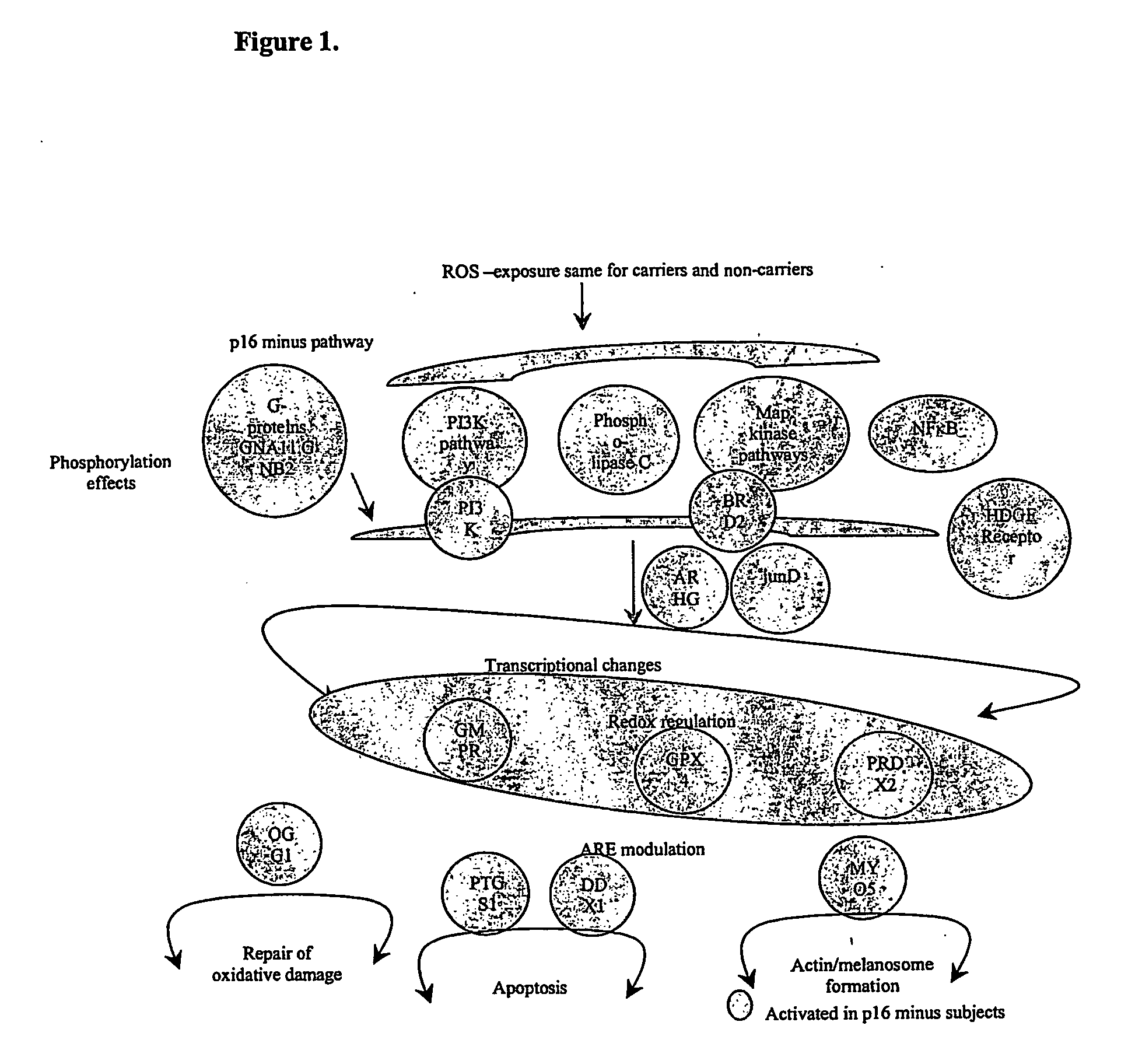Method for detection and characterization of pre-malignant transformation
a detection method and technology for malignant transformation, applied in the field of premalignant transformation pathway and their role, can solve the problems of rare success of chemotherapy, limited ability to accurately and reproducibly identify suspicious nevi, and limited ability to accurately and reproducibly detect suspicious nevi in the year of patients with metastatic melanoma, so as to reduce tumor recurrence
- Summary
- Abstract
- Description
- Claims
- Application Information
AI Technical Summary
Benefits of technology
Problems solved by technology
Method used
Image
Examples
example 1
Experimental Design and Statistical Analysis
[0145] One of the main concerns with cDNA microarray experiments is to minimize the dye-specific biases that could be introduced while at the same time taking advantage of the blocked nature of the cDNA microarray experiment to maximize the precision of the estimated effects. The experimental design involves two key factors, p16 mutation carrier status and nevus morphology, each factor having two different levels. In this scheme, multiple carriers and non-carriers of the mutation participate in the study and one or more benign and atypical nevi is extracted from each patient One or more independent RNA samples is extracted from each nevus.
[0146] Array background correction is applied for each channel (dye) separately to correct the signal intensities for potential systematic artifacts. In the correction method used in this analysis, the signals from each slide are sorted in increasing order and the 5 smallest signals are averaged to give...
example 2
Confirmation by RT-PCR
[0148] Microarray experiments were repeated to re-evaluate the expression level differences between control (normal) tissues and nevus samples. From this work, 14 genes that particularly relate to premalignant transformation were found. These 14 genes, with their listed microarray fold change values, are summarized on Table 5. As seen in this table, some genes increased expression in correlation to premalignant transformation and some genes decreased expression.
[0149] Of the 14 genes listed in Table 5, SOD2 was studied in more detail. An antibody-based immunohistochemistry test was carried out to visualize MnSOD expression in p16 mutation carrier eccrine glands and nevi and compared to non-carrier tissues. Red stained SOD2 was seen in the mutation carrier tissue but non in the non-carrier tissue. The high degree of preferential staining showed that expression of this gene has utility for testing skin biopsises and is particularly desirable. In another embodim...
PUM
| Property | Measurement | Unit |
|---|---|---|
| Northern blot | aaaaa | aaaaa |
| fluorescence-based in-situ hybridization | aaaaa | aaaaa |
| time | aaaaa | aaaaa |
Abstract
Description
Claims
Application Information
 Login to View More
Login to View More - R&D
- Intellectual Property
- Life Sciences
- Materials
- Tech Scout
- Unparalleled Data Quality
- Higher Quality Content
- 60% Fewer Hallucinations
Browse by: Latest US Patents, China's latest patents, Technical Efficacy Thesaurus, Application Domain, Technology Topic, Popular Technical Reports.
© 2025 PatSnap. All rights reserved.Legal|Privacy policy|Modern Slavery Act Transparency Statement|Sitemap|About US| Contact US: help@patsnap.com

